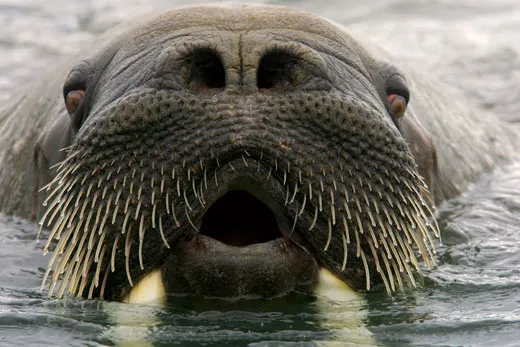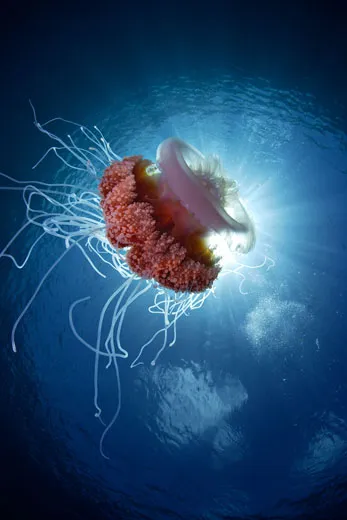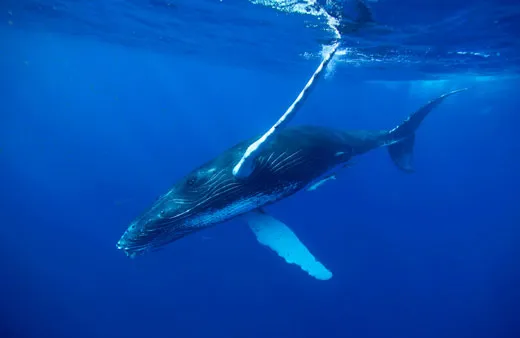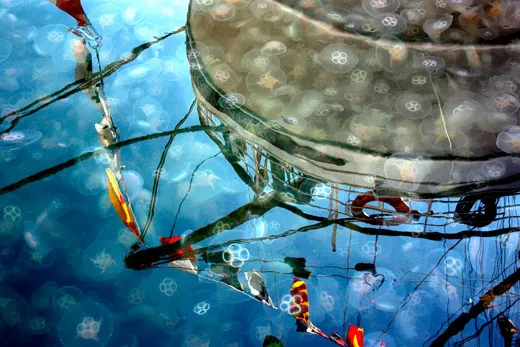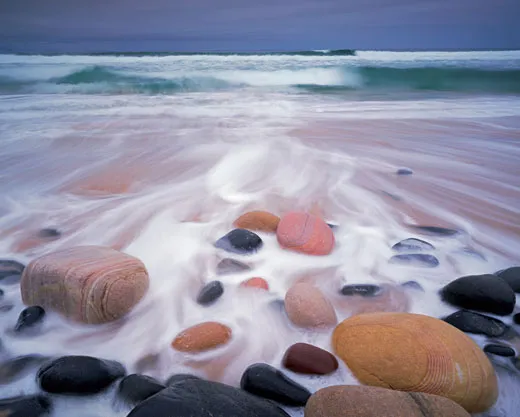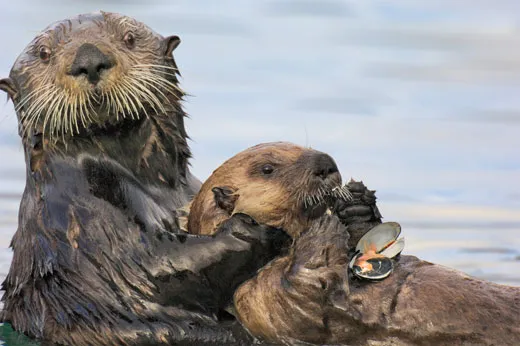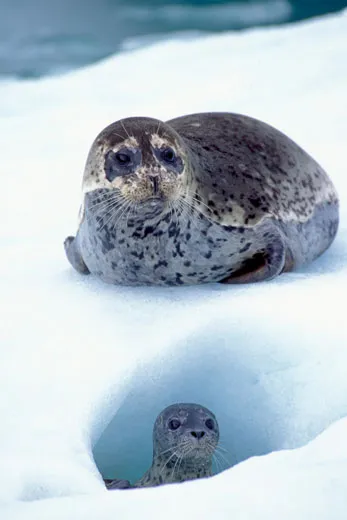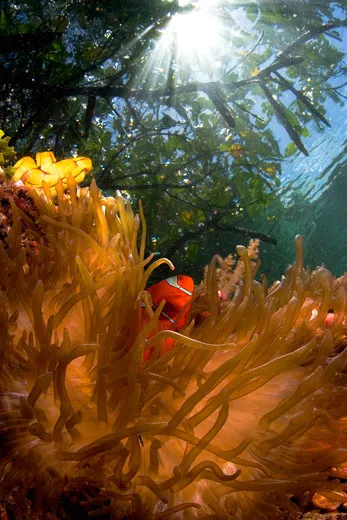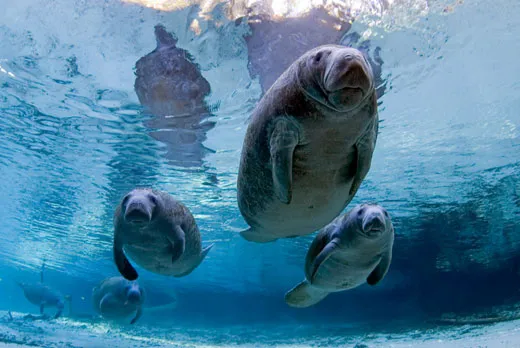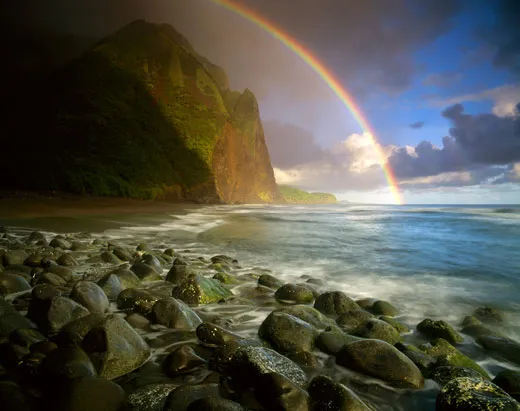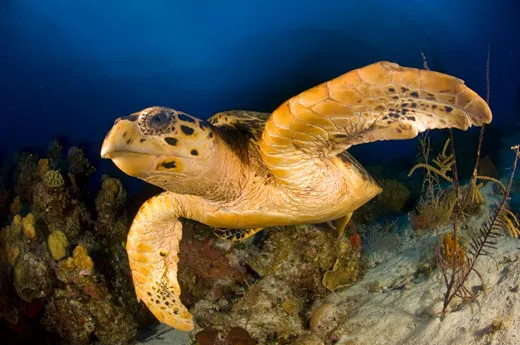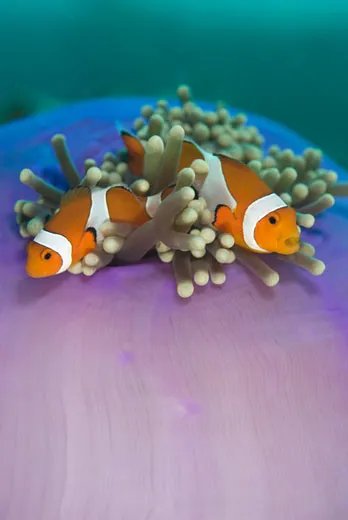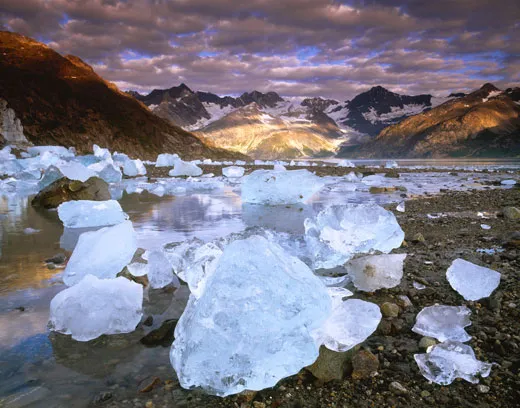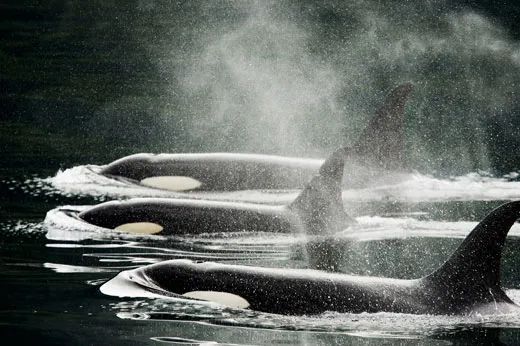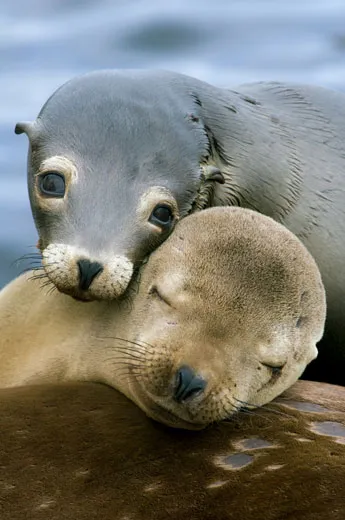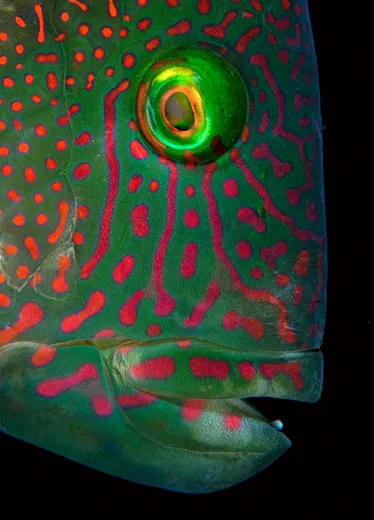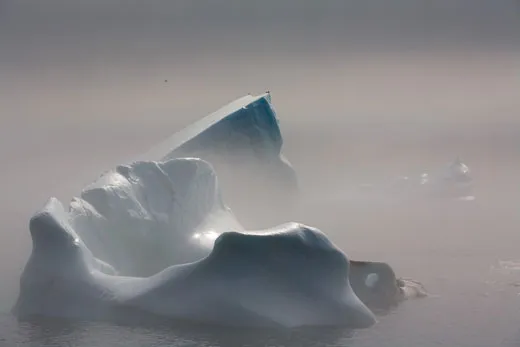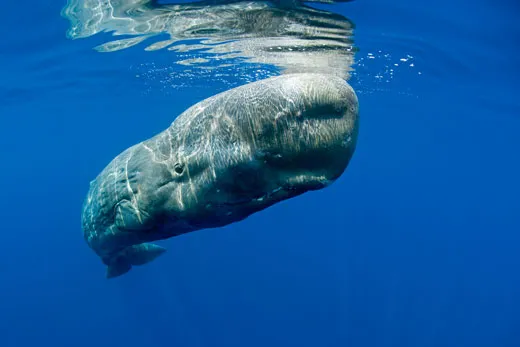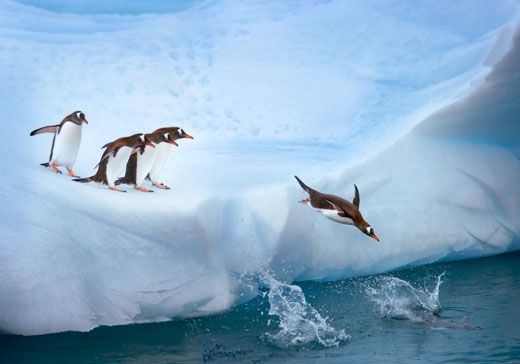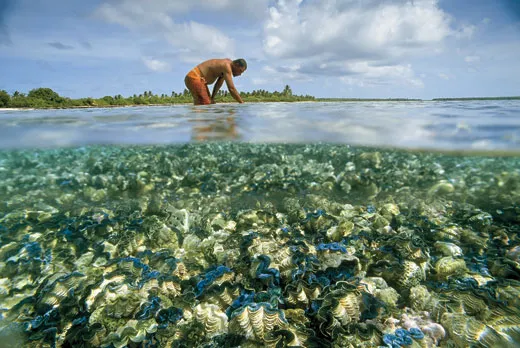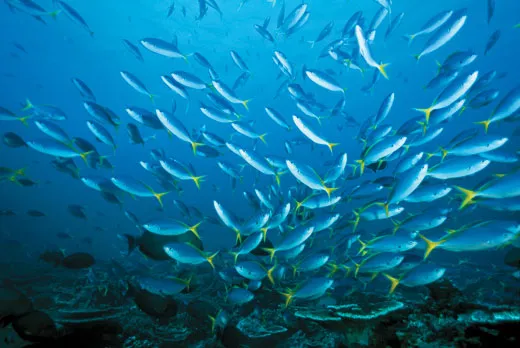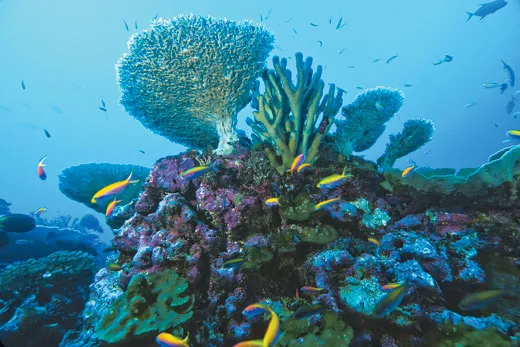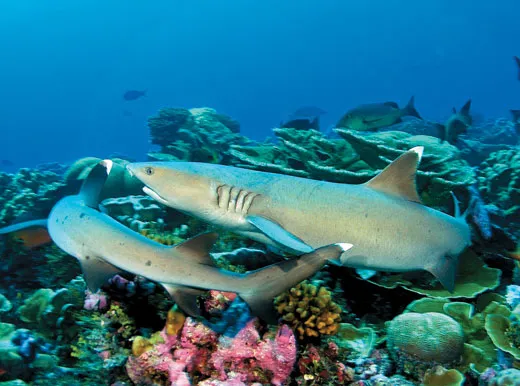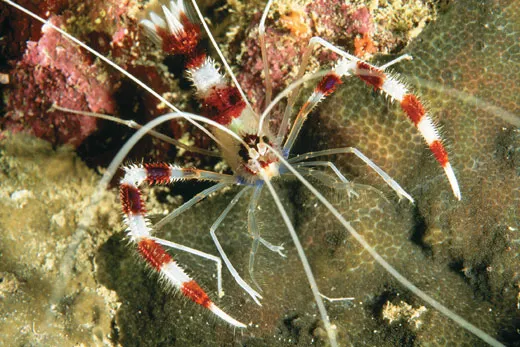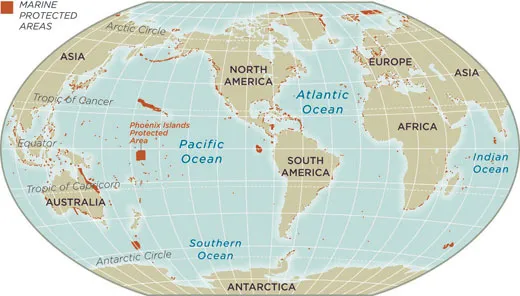Our Imperiled Oceans: Victory at Sea
The world’s largest protected area, established this year in the remote Pacific, points the way to restoring marine ecosystems
/https://tf-cmsv2-smithsonianmag-media.s3.amazonaws.com/filer/victoryatsea_sept08_631.jpg)
At first sight, the people of Kiribati, a nation of tiny islands in the central Pacific, would not appear to be model conservationists. Trash is abundant all along Tarawa, the capital island, a skinny atoll shaped like a backward L and crammed with 40,000 people. (It was the site of one of the costliest landings in World War II, in which 1,000 U.S. marines were killed.) The rustic charm of the traditional thatched houses, which have raised platform floors and no walls, is offset by the smell of human waste wafting from the beaches. The groundwater is contaminated. Infant mortality is high, life expectancy low. And yet this past January impoverished Kiribati established the world's largest protected area, a marine reserve the size of California.
It surrounds the Phoenix Islands, a remote, largely unpopulated archipelago 1,000 miles east of Tarawa. The 158,000-square-mile Phoenix Islands Protected Area, covering about 12 percent of Kiribati's watery domain, holds some of the world's most pristine coral reefs as well as a great abundance and diversity of tropical marine life. And it's the first reserve to place such a large area of open ocean off-limits to commercial fishing. The reserve is one of the planet's ecological bright spots, the boldest, most dramatic effort to save the oceans' coral reefs, the richest habitat in the seas. No wonder the I-Kiribati (pronounced ee-kiri-bahs, which is what the people call themselves; the country is pronounced kiri-bahs) want to showcase the reserve as a uniquely un- spoiled center for marine science, recreational diving and eco-tourism.
Though coral reefs cover less than half a percent of the oceans' area, they host more than 25 percent of its fish species. The first worldwide assessment of coral reefs, released this summer, showed that a third face extinction due to climate change, disease, pollution and overfishing. Australia has outlawed fishing along a third of the Great Barrier Reef to stem the decline of fish stocks there. Palau, a prime scuba-diving destination in the western Pacific, has created a series of no-take areas to protect its healthiest reefs, which amount to a third of its coastline. Other Pacific island governments agreed to do the same, in what they dubbed the "Micronesia Challenge." The Bahamas, Dominican Republic, Jamaica and St. Vincent and the Grenadines, all of whose waters are severely overfished, have responded with a "Caribbean Challenge," which will set aside a fifth of their waters for coral and fish recovery.
In the United States, the largest protected area is the Papahanaumokuakea Marine National Monument, established in 2006 around the Northwestern Hawaiian Islands. It's about 140,000 square miles, larger than all the other U.S. national parks put together. Commercial fishing is expected to be phased out in the area by 2011. The reserve is home to rare and endangered fish as well as turtles, whales, seals and birds.
Marine reserves have proved to be even more effective than researchers hoped. In a recent study of more than 600 miles of coastline in the Great Barrier Reef where fishing was banned only two years earlier, populations of a popular grouper, locally known as the coral trout, were up to 68 percent higher than in areas where fishing had continued.
"It's much better to conserve than to rehabilitate," says Alan Friedlander, a fisheries ecologist with the biogeography branch of the National Oceanic and Atmospheric Administration in Honolulu. "An area as large and as pristine as the Phoenix Islands still has all the pieces of the puzzle that we need to understand how a reef ecosystem works. It's going to tell us what we need to know to use the most effective methods to rehabilitate the reefs where overfishing collapses the delicate balance of nature."
Gregory Stone, a marine biologist at the New England Aquarium in Boston, is one of the prime movers behind the Kiribati reserve. He got a call from Rob Barrel, the operator of a luxury dive boat based in Fiji, who was assembling a group of scientists to study the islands in 2000 on behalf of some conservation-minded divers. Stone jumped at the chance to visit what he calls "the last unexplored oceanic coral reef archipelago in the world."
It was an eye-opening 11 days. "We were completely blown away by the density of marine life we saw—none of us had seen anything like it," Stone recalls. "We would dive into schools of big fish that were so thick they dulled the sunlight like clouds passing above. Looking down, we saw thousands of smaller fish blanketing the reef like flocks of birds." Off the island of Hull, he adds, "the density of giant clams was more than I'd even known existed. There were hundreds of thousands of them, their mantles were like a kaleidoscope."
David Obura, of the Coral Reef Degradation in the Indian Ocean project and chief coral scientist for the trip, says he was astonished by "the first pristine fish populations and the most healthy corals I'd ever seen. It was wild—constant movement and colors, fish streaming in rivers along the reef in one direction, then back the next moment, continually shifting and changing like tributaries in a delta, forming and re-forming. We'd see huge balls of fish that would envelop us and move on."
"For me," Stone says, "it was the first time I had seen what the ocean may have been like thousands of years ago."
That, in itself, was a major discovery. Scientists have a pretty good idea of what terrestrial wildlife and forests and deserts looked like before people started cutting trees, draining swamps and wiping out some species and introducing others. But the oceans' past has long been rather a blank. We fished first and asked questions later. One of the first great cases of overfishing, of north Atlantic cod, began in the 19th century, long before the scuba tank allowed us to get a good look underwater. Surviving accounts of fantastically abundant marine life, starting with explorers like Ferdinand Columbus (Christopher's son), seemed so different from what 20th-century fishermen and researchers had found that "people were wary to believe the history," says marine ecologist Stuart Sandin of the Scripps Institution of Oceanography. "Scientific diving on coral reefs began in the 1950s, and the goal at first was descriptive. No one worried about whether what they were seeing was natural or had been modified by people."
It was only in the 1990s that marine scientists became aware of what Daniel Pauly, a fisheries biologist at the University of British Columbia, calls the shifting baseline syndrome—the problem of establishing historic populations of marine life in a given species or community. Just what is a healthy number of, say, red snapper in the Gulf of Mexico? "Each generation [of scientists] accepts as a base line the stock size and species composition that occurred at the beginning of [that generation's] career," says Pauly. The result is that, over time, the expectation of the natural number of fish in the sea gets smaller and smaller—until the population is so small that even a modest environmental perturbation, or a tad more fishing, causes it to unexpectedly collapse, as the cod population collapsed off Newfoundland and Labrador in the early 1990s.
By the time Stone's team arrived in the Phoenix Islands, marine biologists "were all subconsciously searching for the place that was truly pristine, that would end the debate about what a truly pristine reef should look like," Stone recalls. "And we knew it when we found it."
Obura says that once he dived into the waters of the Phoenix Islands, "I realized this was the holy grail and wondered how long it would last."
In 2000 and in a second survey in 2002, Stone and his colleagues documented more than 150 species of coral and 550 species of reef fish. While the diversity was not unusual for this part of the world, the abundance was. The team found numerous reef sharks and groupers that had become rare elsewhere. "We saw the highest density of big Napoleon wrasses in the world," says Stone, "and that speaks volumes because that's the first fish the fishermen fish if"—he burst out laughing—"fishermen fish fish. Seriously, if those are in good shape, you know everything else is going to be fine." A 30-year-old Napoleon wrasse can weigh up to 420 pounds, and in Hong Kong its flesh retails for $90 per pound; the lips sell for $300.
Why so many fish in the Phoenix Islands? The islands are remote: 2,000 miles from Hawaii and 700 miles from the nearest major airport, in Samoa, which precludes flying live catch to major markets. In addition, the creation of the reserve was possible in part because it came at a time when the virtually unpopulated islands were considered—well, largely useless.
Polynesians settled the islands and built structures of coral stone between 950 and 1500, but they never stayed for long, probably because of frequent droughts. The islands' main source of potable water is rain, which can be scarce. In the early 1800s, whalers charted most of the islands but seldom landed on them. Until the 1880s, U.S. companies mined many of the islands for guano, or seabird droppings, which is rich in phosphate and nitrate and is used as fertilizer. Great Britain later annexed most of the islands and planted tens of thousands of coconut trees. But coconuts, like people, require plenty of water, and the plantations dried up and failed or were abandoned. Colonies intended to ease crowding in Tarawa and the other Gilbert Islands were started in the 1930s and 1940s, but all had been abandoned by the 1960s.
Being halfway between Honolulu and New Zealand made the Phoenix Islands attractive as a refueling stop. Pan American World Airways Clipper seaplanes began touching down at the island of Kanton in 1940, but such travel ended in World War II, when Kanton was taken over by the U.S. military. After the war, Pan Am and other airlines returned with wheeled propeller craft, and a business exporting fish to Hawaii flourished briefly. But the long-range Boeing 707 jet, introduced in 1954, made the airport obsolete. In 1960, NASA built a tracking station for the Mercury space program on Kanton. The station closed in 1967. Two years later, the U.S. Air Force built a base to monitor the trajectory of Minuteman missiles, test-fired from California over the Pacific, but it too closed, in 1979.
That year, Kiribati was born as an independent nation incorporating the Gilbert Islands and the Phoenix Islands, along with most of the Line Islands. Today it has a population of 110,000. The nation's "exclusive economic zone," where it has sovereignty over natural resources (from 12 to 200 nautical miles from shore, the closest 12 miles being its territorial waters), is 1.37 million square miles, or larger than India. Its entire landmass is 313 square miles, the size of Kansas City.
When Gregory Stone first approached Kiribati officials in 2001 about creating a marine reserve, he carried a lavishly illustrated book of underwater photographs taken around the Phoenix Islands. "The book caused quite a sensation," recalls Tukabu Teroroko, then the deputy fisheries minister. "We had no idea there was so much life out there."
It was clear that outlawing the small-scale commercial fishing that occurred close to the Phoenix Islands would pose no political problem, but restricting deep-ocean fishing could be painful: nearly a third of Kiribati's $80 million annual budget came from licenses sold to deep-water fishing operations, especially the large ships that can haul up to 100 tons of skipjack, yellowfin and bigeye tuna a day.
The key to banning tuna fishing was the Washington, D.C.-based environmental group Conservation International, which Stone brought into the negotiations. The group said it could raise money for the management of a marine reserve and compensate the I-Kiribati for any income they forfeited by restricting commercial fishing. "The Republic of Kiribati has now set a standard for other countries in the Pacific and elsewhere in the world," says Conservation International president Russell Mittermeier.
Kiribati President Anote Tong, a graduate of the London School of Economics, who was re-elected for his second four-year term this past October, has supported the reserve initiative from the beginning. "We thought it was a very good idea in this day and age of threat to biodiversity," he says in his spartan office in the ultramodern Parliament building. Tong, who favors traditional Pacific skirts, says "we believe the scope for eco-tourism is great."
Teroroko, whose salary as marine reserve director and budget come from Conservation International, says the reserve "gives us insurance against the loss of marine life. It will show the world that even though we're small, we are leaders. And it will give scientists a place to observe the impact of global warming with no other man-made factors present."
For a nation that is spread out across a series of coral atolls, the health of the surrounding reefs is a matter of life and death, for they provide not only food but also protection from waves. And such atoll reefs become even more important as sea levels rise. Seas rose almost 7 inches in the 20th century, according to the Intergovernmental Panel on Climate Change, and are conservatively predicted to rise between 8 and 24 inches this century because of melting of ice caps and other environmental changes brought on by global warming.
Healthy coral reefs will continue to grow even as sea levels rise, says Jim Maragos, a coral reef biologist with the U.S. Fish and Wildlife Service in Honolulu. "But the damaged ones will not." A dead or dying coral reef will break up into rubble after a couple of decades. Eventually, big ocean swells could wash away villages on islands that, like Tarawa, rise only a few feet above the high-tide mark.
As it happens, perhaps the most ambitious study of the health of coral reefs was conducted partly in Kiribati territory and reported this year. Scientists compared four areas of the Line Islands, strung across 450 miles: Kingman Reef, which has no permanently dry land, is a U.S. wildlife refuge; Palmyra Atoll has been closed to fishing since 2001; and the Kiribati islands of Tabuaeran (formerly called Fanning) and Kiritimati (formerly called Christmas), whose populations have shot up in the last few decades to 2,500 and 5,100, respectively. Both are now being overfished in parts, the scientists say.
"Going from Kingman to Palmyra to Fanning to Christmas is like going forward in time," says Sandin, of the Scripps Institution, who coordinated the study. "It gives you what we called a gradient of human disturbance—a way to examine precisely how human activity affects the reefs."
The marine scientists analyzed all aspects of reef life—fish, corals, algae and, for the first time, microbes. As they moved from Kingman to Kiritimati, the abundance of fish fell dramatically. At Kingman, it was 5.3 metric tons per hectare, of which 40 percent were sharks, 40 percent other large predators like jacks, snappers and groupers and 20 percent small fish. Palmyra came in at 2.5 tons per hectare, Tabuaeran at 1.7 tons and Kiritimati, where virtually all the sharks have been killed for their fins, at just 1.3 tons.
The scientists discovered a link between shark density and coral reef health: the coral reefs at Kiritimati had the most algal growth, and Kingman's the least. "We're not sure how the link works," says Sandin, "but we think that when there are large numbers of sharks, herbivores eat more algae and grow faster so they can reproduce before they themselves get eaten." Algae can stifle coral development and also release sugar into the water, providing food for bacteria that include pathogens like E. coli and streptococcus and staphylococcus, which increase the rate of coral disease and attack larvae of the organisms that make up coral reefs. Overall, the researchers found that the corals in Kingman were in much better shape than those in Kiritimati, despite satellite data indicating a 2002 spike in area water temperatures, which causes coral bleaching and other diseases. "This shows that healthy reefs with a lot of fish can survive global warming much better than fished-out ones," says Sandin. "That's another reason for creating more marine reserves and building up the fish populations."
Tarataake Teannaki, Kiribati's head of tourism, hopes that even more scientists will start coming to Kiribati. "We want to build a lab like they have in Palmyra," he says. And he hopes to use the cachet of the world's biggest marine reserve to develop eco-tourism focused on diving and bird-watching. Jobs are sorely needed in Kiribati, where only 21 percent of the eligible workers are fully employed, most of them in government jobs.
Jacob Teem, who represents Kanton and Kiritimati islands in the Kiribati Parliament, operates a small catch-and-release fishing lodge on Kiritimati and says he plans to start another in Kanton. Emil Schutz, who runs a small eco-resort on a scenic islet near Tarawa, hopes to create a bigger one on Kanton to cater to scientists and recreational divers.
Reserve director Teroroko says the more tourist boats, the better: they could function as the authorities' eyes and ears and help prevent poaching inside the reserve. He hopes to attract a fleet that would take bird-watchers to Birnie, Phoenix and McKean islands, all longtime bird sanctuaries. "We could even anchor some floating platforms and let tourists dive off them," he says.
Might the Phoenix Islands someday be harmed by too much of a good thing? "The Phoenix are too isolated to ever be ruined by tourism, so I'm not worried," says Stone. "On the contrary, I hope that those who get to see the extraordinary underwater life in these islands will spread the notion that it's really important to save our last pristine reefs. And diving off a floating platform with tens of thousands of fish going around has to be the ultimate way of experiencing the open ocean and seeing some of the most remarkable animals on earth."
Christopher Pala lives in Honolulu and is the author of The Oddest Place on Earth: Rediscovering the North Pole.
